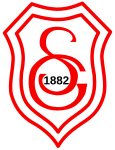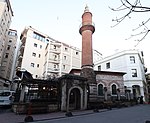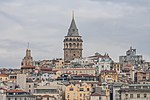Church of SS Peter and Paul, Istanbul
1843 establishments in the Ottoman Empire19th-century Roman Catholic church buildings in TurkeyBuildings and structures in BeyoğluRoman Catholic churches completed in 1843Roman Catholic churches in Istanbul

SS Peter and Paul (Turkish: Sen Pier ve Sen Paul Kilisesi, Italian: Chiesa dei Santi Pietro e Paolo a Galata) is a Roman Catholic church in Istanbul, important for historical reasons. The church owns an icon of the Virgin of the Hodegetria type, which originally lay in a Dominican church in Caffa, Crimea. The current building is a nineteenth-century (1841 to 1843) reconstruction of the Fossati brothers.
Excerpt from the Wikipedia article Church of SS Peter and Paul, Istanbul (License: CC BY-SA 3.0, Authors, Images).Church of SS Peter and Paul, Istanbul
Galata Kulesi Sokağı,
Geographical coordinates (GPS) Address Nearby Places Show on map
Geographical coordinates (GPS)
| Latitude | Longitude |
|---|---|
| N 41.024722222222 ° | E 28.973055555556 ° |
Address
Galata Kulesi Sokağı 22
34421 (Bereketzade Mahallesi)
Türkiye
Open on Google Maps







